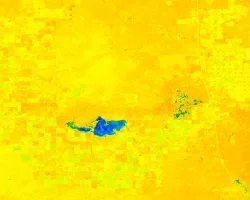This ""applications"" research project focuses on enhancing the management of multiple important highly migratory pelagic fish species in the Gulf of Mexico and surrounding waters, with particular focus on Atlantic bluefin tuna (Thunnus thynnus) and other highly migratory tunas and billfishes. Our team has developed an innovative spawning habitat model for Atlantic bluefin tuna in the Gulf of Mexico in a collaboration with the National Oceanic and Atmospheric Administration's National Marine Fisheries Service (NOAA NMFS). The study proposed will leverage our present collaborations to project this habitat model into the future using IPCC climate models and scenarios to assess possible effects of climate change on the spawning habitat and fish population dynamics. We will improve the present habitat model by incorporating a 28-year time series of NOAA NMFS SEAMAP ichthyoplankton surveys in the Gulf of Mexico, historical fisheries analyses (commercial pelagic longline fishing observer data) in the Gulf of Mexico, and relevant historical oceanographic data including historical and concurrent satellite imagery. Specifically, we will assess the habitat using the numerical simulations constructed for the fourth assessment report of the Intergovernmental Panel on Climate Change (IPCC AR4), which are being refined in preparation for the fifth assessment report (IPCC AR5). We will apply the model results both for the North Atlantic and in a downscaled mode, using HyCOM and ROMS modeling to assess scenarios within the Gulf of Mexico. The research is important because strives to develop functional links between climate variability, regional-scale oceanographic processes, and fisheries recruitment. The Atlantic bluefin tuna and other highly migratory fish species that use the Gulf of Mexico as essential habitat are still largely managed under the assumption that ecosystem parameters do not change over time. At the moment, how possible climate scenarios may affect these fish populations under other varying human pressures is unknown. The research team is multi-sector and multi-disciplinary, including government fishery experts and managers (NOAA NMFS Southeast Fisheries Science Center), government satellite researchers (NOAA OAR AOML), academic (University of Miami Cooperative Institute of Marine and Atmospheric Sciences and University of South Florida Institute for Marine Remote Sensing) and commercial (Roffer?s Ocean Fishing Forecasting Service, Inc.) partners. This collaboration brings together time series of climate observations from satellite and in situ data, time series of biological observations, and ecological and climate models.
Project


